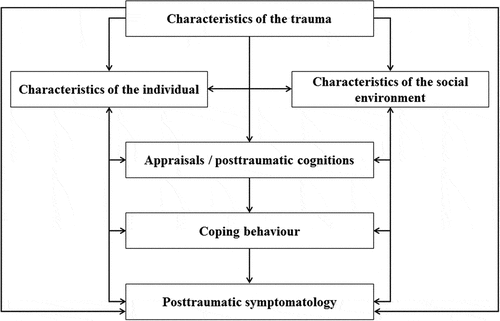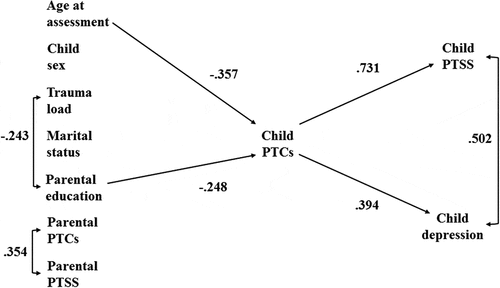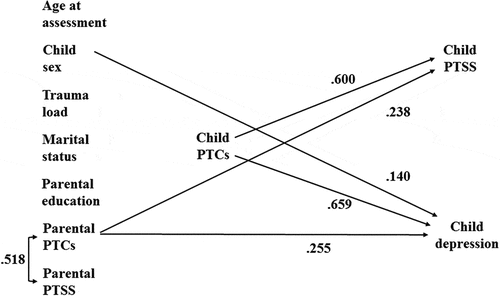Figures & data
Figure 1. Transactional Model of Coping with Trauma Adapted from Landolt, Citation2012, p. 81.

Table 1. Sociodemographic data and trauma-related information of the Swiss accidental and German interpersonal trauma samples.
Table 2. Comparison of measures (mean, SD, range) between the Swiss accidental and German interpersonal trauma samples.
Figure 2. Cross-sectional associations for the accidental trauma sample.

Figure 3. Cross-sectional associations for the interpersonal trauma sample.

Supplemental Material
Download MS Word (25.1 KB)Data availability statement
Given that the ethical committees agree, the datasets used and/or analysed during the current study are available from the corresponding author on reasonable request.
